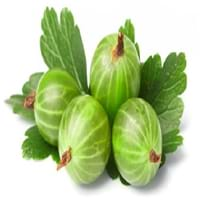Health Benefits
Arthritis prevention, Cancer prevention, Liver health, Scurvy treatment, Ulcer prevention
Anti-oxidant properties, Boosts immune system, Skin rejuvenation, Strengthening of bones
General Benefits
Boosts immune system, Digestive aid, Eye care, Fights against infections, Improves blood circulation, Maintains healthy cholesterol level, Sore throat treatment, Treatment of common cold
Antiseptic properties, Cures headache, Removes waste from kidney
Skin Benefits
Anti-aging benefits, Brightens and lightens complexion, Reduces wrinkles, Treatment of acne
Hydrates skin
Hair Benefits
Prevents hair loss, Promotes longer and healthier hair, Treatment of dandruff
Good conditioner
Allergy Symptoms
Constipation, Diarrhea, Drop in blood pressure, Eczema, Facial swelling, Hives, Hoarseness, Itching, Itchy eyes, Nausea, Red rash, Redness of eyes, Runny nose, Sore eyes, Swelling of mouth, tongue or lips, Tingling sensation in mouth, Vomiting
Chest pains, Rhinitis, Wheezing
Side Effects
Gastric irritation
Unknown
Best Time to Eat
Best if taken as a breakfast (or empty stomach), As a snack in the late afternoon, Don't consume at night and before bed, Morning time (before lunch)
As a snack in the late afternoon, Don't consume at night and before bed, Eat the fresh ones, avoid mixing with any other foods, don't eat after meal., Morning time (before lunch)
Vitamin B5 (Pantothenic Acid)
Vitamin C (Ascorbic Acid)
Vitamin K (Phyllochinone)
Not Available
Lutein+Zeaxanthin
Not Available
Calories in Fresh Fruit with Peel
Calories in Fresh Fruit without Peel
Not Available
Not Available
Calories in Frozen Form
Not Available
Calories in Dried Form
Not Available
Calories in Jam
Not Available
Calories in Pie
Not Available
Type
Berry, Tree fruit
Tree fruit, Tropical
Season
Summer
Early summer, Early winter, Late fall, Late spring
Varieties
Whinham's Industry, Green Hansa, Clark, Chataqua, Invicta, Keepsake, Lepaa Red, May Duke and Whitesmith
Rongrien, Chompu, Rapiah, Bingjai and Lebak Bulus
Color
Green, Purple, Red, Yellow
Coral red, Yellow
Inside Color
Yellowish Green
Greyish-white
Taste
Astringent
Sour, Sweet
Origin
Africa, Europe, South-West Asia
Unknown
Soil Type
Loamy, Well-drained
Clay, Loam
Climatic Conditions
Dry, Warm
Humid
Facts about
- Traditionally, kids were told that babies were found under gooseberry bushes.
- They are also called 'fayberries' due to an ancient belief that fairies hid in gooseberry bushes to avoid danger.
- Oils extracted from its seeds is used to make soaps and candles.
- 'Rambut' means hairy in Malay.
- It makes the best hair mask.
- Seeds are edible and healthy too.
Top Producer
Germany
Thailand
Other Countries
Austria, Czech Republic, Denmark, Hungary, Lithuania, Poland, Russia, Ukraine, United Kingdom
Africa, India, Indonesia, Malaysia, Philippines, Sri Lanka
Top Importer
Not Available
Singapore
Top Exporter
Not Available
Thailand
Botanical Name
Ribes uva-crispa
Nephelium lappaceum
Synonym
Ribes grossularia
Rambota
Subkingdom
Tracheobionta
Tracheobionta
Division
Magnoliophyta
Tracheophyta
Class
Magnoliopsida
Magnoliopsida
Subclass
Dillenhidae
Rosidae
Order
Saxifragales
Sapindales
Family
Grossulariaceae
Sapindaceae
Species
R. uva-crispa
N. lappaceum
Generic Group
Saxifrage
Not Available
Difference Between Gooseberry and Rambutan
We might think that Gooseberry and Rambutan are similar with respect to nutritional value and health benefits. But the nutrient content of both fruits is different. Gooseberry and Rambutan Facts such as their taste, shape, color, and size are also distinct. The difference between Gooseberry and Rambutan is explained here.
The amount of calories in 100 gm of fresh Gooseberry and Rambutan with peel is 44.00 kcal and 69.00 kcal and the amount of calories without peel is Not Available and Not Available respectively. Thus, Gooseberry and Rambutan belong to and category.These fruits might or might not differ with respect to their scientific classification. The order of Gooseberry and Rambutan is Saxifragales and Sapindales respectively. Gooseberry belongs to Grossulariaceae family and Rambutan belongs to Sapindaceae family. Gooseberry belongs to Ribes genus of R. uva-crispa species and Rambutan belongs to Nephelium genus of N. lappaceum species. Beings plants, both fruits belong to Plantae Kingdom.









